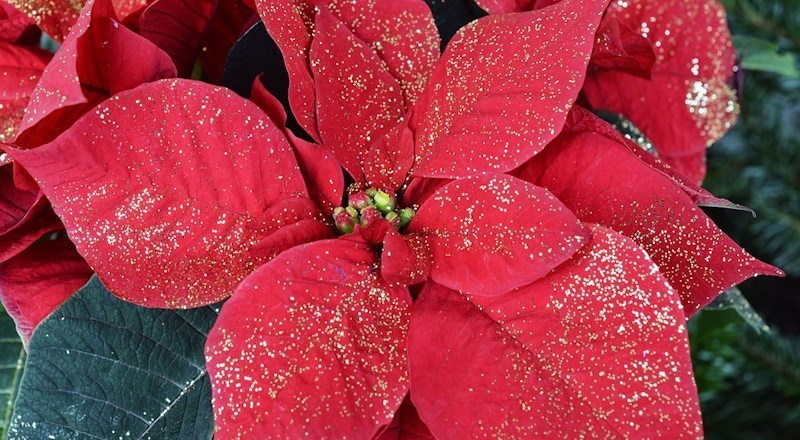27 November 2018
Our Top 5 Christmas Houseplants For 2018
Everyone loves giving or receiving a flowering houseplant during the festive season. Here are our top five best loved plants, plus care guidelines to share so that we all get the best from our plants:
- Poinsettia: There’s nothing quite like the vibrant red bract colour of a Poinsettia at Christmas – they also come in other colours such as pale pink, white, yellow or a marbled effect. They hate cold outdoor conditions and are quite brittle so can be damaged in transit so take care when getting them home. Poinsettias need bright light (but not strong sunlight) but away from cold draughts – a minimum temperature 13-15 °C (55-59°F) is ideal. Take care not to overwater your plant – let the surface of the plant begin to dry out before watering. Water from underneath by sitting in a tray with a little water, for around ten minutes. Then leave to drain before putting the plant back into its pot cover. Feed once a month with specialist poinsettia fertiliser.
- Cyclamen persicum – Persian cyclamen: These pretty tuberous plants just keep on flowering right through the winter indoors if given the right conditions. They like bright light and a cool temperature (minimum 5°-7°C) and dislike being too wet or too dry – water moderately from underneath. Twist off faded flowers and yellowing leaves as necessary.
- Christmas cactus: The latin name is Schlumbergera truncata – these easy-to-grow cacti are always a cheery sight at this time of year, and can flower for 6-8 weeks at a time or even longer. They like bright light and a minimum temperature of 10°C.
- Azalea (Rhododendron indica): Flowers for weeks, given cool, bright conditions and plenty of water. Not frost hardy, but in very sheltered gardens can be planted outdoors once hardened off in the spring. Best watered by submerging the pot in water for a few minutes (until air bubbles disappear) then letting drain. Ideally stand the pot on a tray filled with pebbles. Hot, dry conditions aren’t suitable and flowers will quickly drop if the plant dries out too much.
- Moth orchid (Phalaenopsis): The easiest orchid to grow, and available in many different colours from pure white to pinks, purple and yellow– the beautiful moth orchid likes a minimum temperature of 16°C, maximum 30°C and a bright position in an east or west window (move further back during summer). In ideal conditions it will flower for 3 months at a time. After flowers have finished, cut back to the second joint on the stem, below the lowest flower, to encourage a new flower spike to form. Water regularly but avoid overwatering; reduce watering in winter. Place in a spot about 5°C cooler to encourage re-flowering.








